
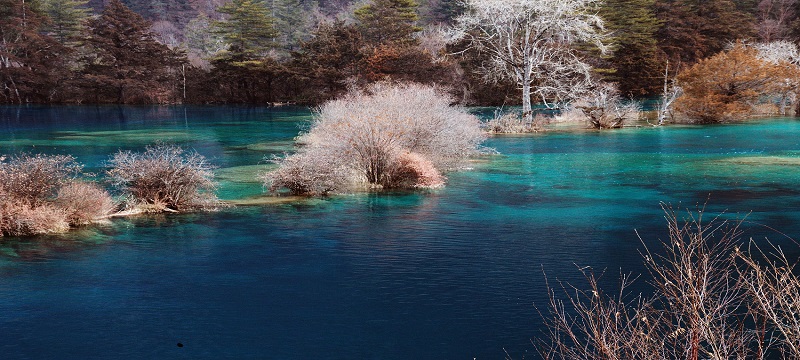
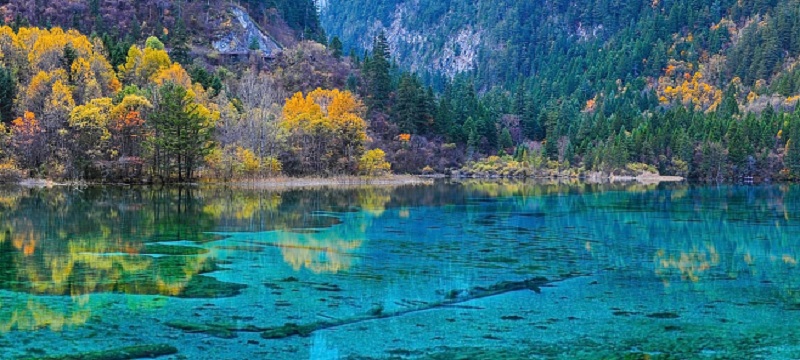
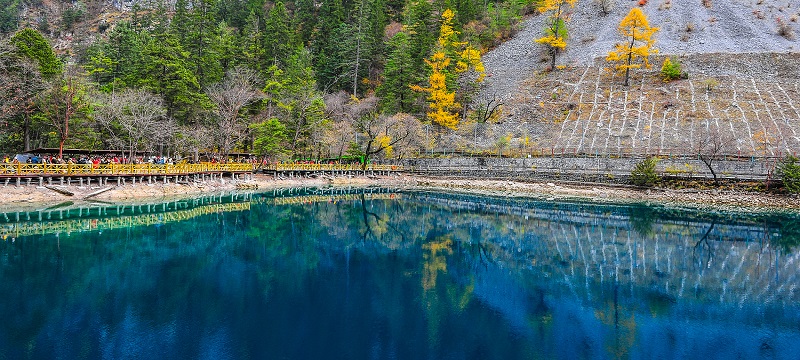
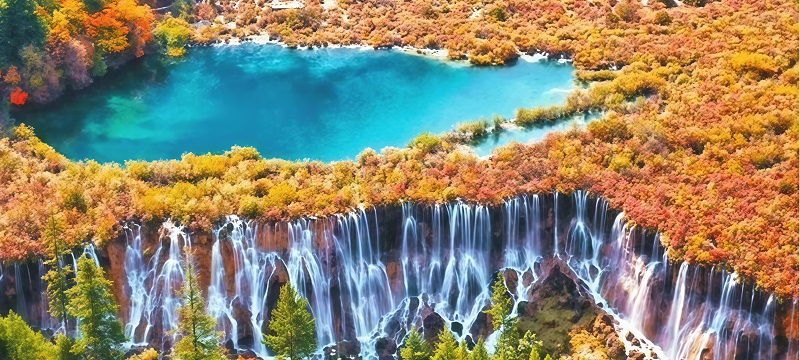
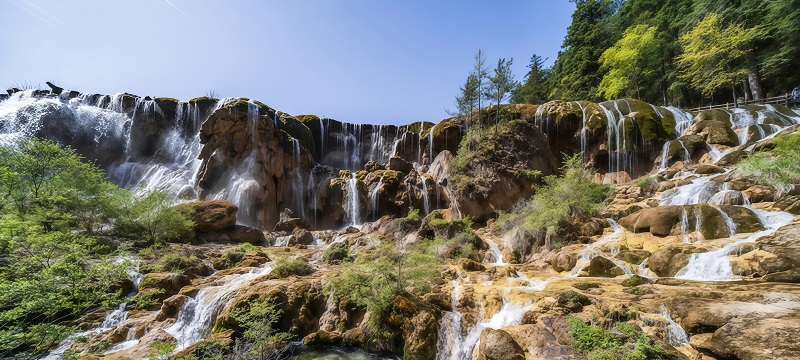
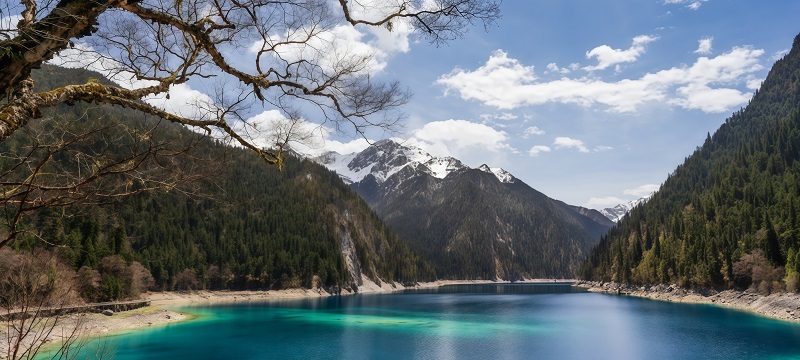







Jiuzhaigou Valley Scenic and Historic Interest Area
UNESCO site in Sichuan, China. Turquoise lakes, waterfalls & snow peaks. Stunning alpine scenery & Tibetan culture. Nature's masterpiece!
1. Attraction Introduction
Jiuzhaigou, a UNESCO World Heritage Site in Sichuan Province, is a breathtaking valley renowned for its colorful alpine lakes, multi-level waterfalls, and Tibetan culture. Named after nine Tibetan villages, its crystal-clear waters reflect shades of turquoise, blue, and green from mineral deposits. Key highlights include Five Flower Lake, Nuorilang Waterfall, and Long Lake. The area spans 720 sq km with elevations from 2,000-4,500m, offering diverse ecosystems and rare wildlife like giant pandas.
2. Historical Background
Jiuzhaigou Valley, meaning “Nine Village Valley”, is named after the nine Tibetan villages scattered throughout the region. The valley has been home to Tibetan and Qiang ethnic groups for centuries, who lived in harmony with nature and preserved the pristine environment.
Historically, Jiuzhaigou was an isolated and little-known area until the 1970s when it was discovered by scientists and environmentalists. Recognizing its extraordinary natural beauty and ecological value, the Chinese government designated it as a national nature reserve in 1982. Efforts were made to protect its colorful lakes, cascading waterfalls, snow-capped peaks, and diverse wildlife.
In 1992, Jiuzhaigou was declared a UNESCO World Heritage Site, and in 1997, it became a World Biosphere Reserve. Over the years, extensive conservation programs have helped maintain its fragile ecosystem, despite challenges like tourism pressure and natural disasters such as the 2017 earthquake, which led to temporary closures and restoration efforts. Today, Jiuzhaigou remains one of China’s most breathtaking natural wonders.
3. Map & Key Spots
Rize Valley (Right Branch):
Five Flower Lake (Wuhua Hai): Translucent multi-colored lake.
Pearl Shoal Waterfall: 310m-wide cascading waterfall.
Arrow Bamboo Lake: Panda habitat with mirror-like reflections.
Shuzheng Valley (Left Branch):
Nuorilang Waterfall: Widest waterfall in China (320m).
Tiger Lake: Emerald-green lake with submerged ancient trees.
Zechawa Valley (Central):
Long Lake (Chang Hai): Highest lake (3,060m) with snowy peaks.
Five-Color Pond (Wucai Chi): Smallest but most vibrant lake.
4. Suggested Route
1-Day Highlights Tour:
Enter at 7 AM → Eco-bus to Rize Valley → Five Flower Lake → Pearl Shoal.
Transfer to Shuzheng Valley → Nuorilang Waterfall → Tiger Lake.
Afternoon eco-bus to Zechawa Valley → Long Lake → Five-Color Pond.
2-Day Deep Exploration: Add hikes to Primeval Forest and Tibetan village visits.
5. Best Season / Seasons to Avoid
Best: October (autumn foliage) & April-May (spring blooms).
Good: July-August (lush greenery but crowded).
Avoid: December-March (some areas close; lakes may freeze).
6. Transportation Guide
Location: Jiuzhaigou County, Aba Tibetan and Qiang Autonomous Prefecture, Sichuan Province, China
From Chengdu:
Train: Chengdu → Jiuzhai Huanglong Station(2hr, ~300RMB round-trip).
Bus: Chadianzi Station → Jiuzhaigou (8-10hrs, 150RMB).
Private Car: 7hrs via G213 (landslide risk in rainy season).
From Airport: Shuttle to park (1.5hrs, 45RMB).
7. Ticket Prices & Fees
Peak Season (Apr-Nov): 169RMB (entrance) + 90RMB (eco-bus).
Off-Season (Dec-Mar): 80RMB (entrance) + 80RMB (eco-bus).
Optional:
Evening Tibetan Culture Show: 180-300RMB.
Huanglong Scenic Area Combo Ticket: 250RMB (60km away).
8. Special Notes
Altitude: Some areas exceed 3,000m; acclimate in Jiuzhaigou Town (1,400m) first.
Eco-Bus System: Mandatory hop-on/hop-off buses run until 6 PM.
Closed Areas: Zechawa Valley may close in winter due to snow.
Luggage Storage: Available at park gates (free).
Photography Tips: Best light for lakes is 11 AM-2 PM.
